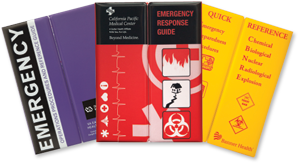Written by: Andy Altizer & Jim Hodge, April 4, 2024
“As a last resort,” seems to be the preface of most “Run Hide Fight” training classes when it is time to discuss the “fight” response option to an active shooter. In reality, the decision to fight depends on many variables that are often not discussed in a typical training scenario, especially in an educational setting.
The Houston Police Department developed the Run Hide Fight (Surviving an Active Shooter) program approximately 15 years ago, and the general theme has been adopted by many, if not, most schools and universities. At least two federal organizations used the Run Hide Fight concept to produce their own videos, but in different environments: The FBI at a nightclub and CISA at work.
Organizations like ALERRT’s Civilian Response to Active Shooter Events (CRASE) made modifications to Run Hide Fight focusing on Avoid Deny Defend. Still other organizations like the University System of Georgia spearheaded by the University of Georgia personalized their video response training with the focus to Plan Prepare React.
Active Shooter’s Location Impacts Response
Arguably, most of the training concepts described above are very similar. Debates seem to stem out of the “Hide” concept, where others point more deliberately to the need to “barricade,” but in reality, “hide,” carries the same message when further explained. Frequent discussions in a training environment about “Run” v. “Hide” usually come down to the location of the shooter.
- Is the shooter on the other side of campus?
- Is the shooter in the same building?
- Is the shooter’s location unknown?
- Are students in an area that can be secured?
Taking immediate action often comes down to what you know. “It depends” is a logical answer when someone deliberately asks, “What would you do if there were an active shooter on campus?”
But – what if the shooter does get into “your” immediate area. It goes back to the advice that’s frequently given to only fight as a last resort. The variable that makes this advice problematic in an educational setting is that the responsible person – usually a teacher or professor – has a room full of students, including in lower grades, very young children. Understandably the decision to fight is still up to the responsible adult, but many, would agree that when it comes to protecting students, some kind of action is worth considering beyond simply waiting to see what happens next.
Decision to Fight the Gunman Depends on Many Variables
Just as it is with the decision on whether to run or hide, the decision to fight depends on a lot of other variables. For example:
- The age of your students.
- If the police have arrived.
- Is there a nearby window that may offer an escape?
- Is there more than one teacher/professor in the room?
- Are there improvised weapons nearby?
- Has the shooter already killed or injured others in another room or area?
- What is the state of mind of the shooter?
- What kind of weapon?
- School policy?
- Again, location of the shooter.
Now, if you have determined that you must fight in order to survive and to project your students, you must fully commit. As Johnathan Gilliam says in his book, “Sheep No More,” fight like your life depends on it, because it likely does.
Taking the cue from Gilliam, we can begin to change the narrative from what we often hear and teach. The regular gamut of daily crimes in America that stand out more than others are things such as the main crimes that most jurisdictions plan for: murder, rapes, theft, robberies, etc. All of these are terrible events for the victims, but active shootings will always get the country’s attention. Active shooter incidents take place anywhere there’s a collection of “targets,” but the most visceral will always be those in schools or colleges, partly due to the news cycle, which will continuously report until the next “bigger” story. Combining the tragedy involving school children and the nonstop media coverage promises to create extreme emotions.
Civilians, Including Teachers, Need More Guidance
Other than the change in the police response since Columbine, and then more recently the integrated response that includes the fire department and emergency medical services, there doesn’t seem to be a noticeable shift in the suggested response of civilians in an active shooter incident since the Run Hide Fight approach. Depending on various research and readings, law enforcement’s response times to an active shooter ranges from three minutes to 14 minutes, which is a long time for civilians (including school children) to be in an area with an active shooter.
Perhaps it’s time to provide more guidance for civilians, including teachers, when the only lifesaving option is to “fight.” There have not been any solid solutions to solving this phenomenon other than to suggest to teachers to throw things at the shooter, or “only as a last resort” to take more aggressive action. Past suggestions for taking aggressive action are often provided without greater detail and direction, although some training does include the suggestion of using improvised weapons.
There are three things to reiterate:
- To fight an armed gunman, even as a last resort, is easier to suggest that actually accomplish;
- The added responsibility of protecting children makes any decision more complex and difficult;
- The most important variable in deciding to and then actually carrying out fight is a case-by-case judgement that must be made in a highly stressful, volatile and time-compressed situation.
But, if a teacher, staff member, or even a student decides that their only chance of surviving is to fight, then they must first and foremost commit to their actions. Throwing erasers and books at a shooter may serve as a brief distractor but will likely not deter the shooter from killing. Fight means all in, attack (go on the offense) and incapacitate and neutralize the shooter until the police arrive.
We must inculcate the notion that there may be a time to have a far more proactive approach in our classrooms and in the public sphere. The first step in creating such a mindset is to define our terms and, with that, everyone’s expectation as to how extreme situations should end, which includes protecting students, and realizing this may include taking on the shooter.
Those Who Choose to ‘Fight’ Must Go All-In
More specifically, the fight term “fight” is not necessarily the wrong word, but it may no longer be strong enough to suggest taking immediate action. There have been enough incidents in the public sphere that will back up the following points. It’s worth nothing that many of these shootings end tragically even with law enforcement mere feet away. Sometimes you may have to bring a rock to a gunfight. Here are some basic principles:
- Again, if you choose to fight, commit to neutralizing the shooter. Simply hitting, throwing something, or even aggressively attacking a sensitive spot of the shooter should not be what is taught……again, fight like your life (and your students’ life) depends on it, because it does. Eye gouge, bite, knee, headbutt – whatever it takes. Don’t fight fair! This approach may not be for everyone, but it should be considered in order to survive.
- Let’s teach that being wounded is not the end. Years of Hollywood action scenes make us believe that most wounds are immediately fatal. That is not true. If injured, you probably can still go on the offensive.
- Remember, even with the best of intentions, law enforcement may not arrive on time. You may be on your own longer than you’d like to think. This must figure into your calculus.
- Time permitting and with no chance of escaping, come up with a plan. Plan to flank, distract, and attack to survive.
- Know where to find and use improvised weapons in the classroom: scissors, rocks, blocks, chili powder/hot sauce, bear spray, air horns, marbles, bricks, hardened desks, bats/sticks/rods, fire extinguishers, golf/baseballs, canned food, paperweights, etc. These may not be sexy, but in a desperate situation they would better the odds and would be readily available for anyone to use.
Not Everyone Will Embrace This Approach
Fighting to incapacitate a shooter and to save students is a tough concept to sell in the education world and should not be part of a teacher’s job. But, when it comes to surviving, and protecting students, perhaps more effort should be spent discussing, and even training teachers. When it comes to training teachers to fight to protect students, not only is executive support crucial, but executive approval is a must. Such a concept will not be well received by everyone.
Few would disagree that running or escaping/evading is a preferred option in an active shooter attack, but when all else fails, then what? Fight!
Andy Altizer is the emergency management coordinator and Jim Hodge is the Security Manager, both from for the Westminster Schools in Atlanta, Georgia.
NOTE: The views expressed by guest bloggers and contributors are those of the authors and do not necessarily represent the views of, and should not be attributed to Campus Safety.
This article appeared on Campus Safety News and is shared with consent – If you appreciated this article and want to receive more valuable industry content like this, click here to sign up for our FREE digital newsletters!







